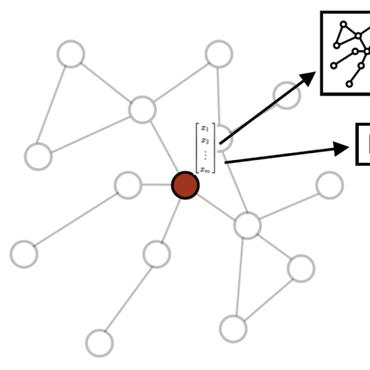Simple and Deep Graph Convolutional Networks
Graph convolutional networks (GCNs) are a powerful deep learning approach for graph-structured data. Recently, GCNs and subsequent variants have shown superior performance in various application areas on real-world datasets. Despite their success, most of the current GCN models are shallow, due to the {\em over-smoothing} problem. In this paper, we study the problem of designing and analyzing deep graph convolutional networks. We propose the GCNII, an extension of the vanilla GCN model with two simple yet effective techniques: {\em Initial residual} and {\em Identity mapping}. We provide theoretical and empirical evidence that the two techniques effectively relieves the problem of over-smoothing. Our experiments show that the deep GCNII model outperforms the state-of-the-art methods on various semi- and full-supervised tasks. Code is available at https://github.com/chennnM/GCNII .
PDF Abstract ICML 2020 PDFCode
Datasets
 OGB
OGB
 Cora
Citeseer
PPI
Cora
Citeseer
PPI
 Wiki Squirrel
Wiki Squirrel
 PASCAL VOC
WebKB
Penn94
Cornell
PASCAL VOC
WebKB
Penn94
Cornell
 Long Range Graph Benchmark (LRGB)
genius
twitch-gamers
Deezer-Europe
Chameleon (48%/32%/20% fixed splits)
Squirrel (48%/32%/20% fixed splits)
Wisconsin(60%/20%/20% random splits)
Squirrel (60%/20%/20% random splits)
Cornell (48%/32%/20% fixed splits)
Cornell (60%/20%/20% random splits)
Film (60%/20%/20% random splits)
PubMed (60%/20%/20% random splits)
Texas(60%/20%/20% random splits)
Cora (48%/32%/20% fixed splits)
Wisconsin (48%/32%/20% fixed splits)
Chameleon(60%/20%/20% random splits)
Citeseer (48%/32%/20% fixed splits)
PubMed (48%/32%/20% fixed splits)
Film(48%/32%/20% fixed splits)
Texas (48%/32%/20% fixed splits)
Long Range Graph Benchmark (LRGB)
genius
twitch-gamers
Deezer-Europe
Chameleon (48%/32%/20% fixed splits)
Squirrel (48%/32%/20% fixed splits)
Wisconsin(60%/20%/20% random splits)
Squirrel (60%/20%/20% random splits)
Cornell (48%/32%/20% fixed splits)
Cornell (60%/20%/20% random splits)
Film (60%/20%/20% random splits)
PubMed (60%/20%/20% random splits)
Texas(60%/20%/20% random splits)
Cora (48%/32%/20% fixed splits)
Wisconsin (48%/32%/20% fixed splits)
Chameleon(60%/20%/20% random splits)
Citeseer (48%/32%/20% fixed splits)
PubMed (48%/32%/20% fixed splits)
Film(48%/32%/20% fixed splits)
Texas (48%/32%/20% fixed splits)






















































